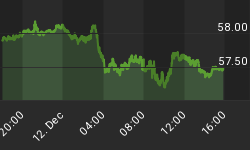SIGNS OF THE TIMES:
"The Existing Home Market is in Freefall"
- Bloomberg, October 3
Chief Economist, High Frequency Economics"Exorcising Ghost of Octobers Past"
"Despite Housing Slump, Crashes, Such as in 1987 Likely to Stay Memories"
- Wall Street Journal, October 15
"I think the Fed has taken care of the Summer's harrowing turbulence by cutting short-term interest rates, pumping money into the system and seeming determined to prevent recession."
- Wall Street Journal, October 15
As we like to say, so long as prices are rising the street will ardently believe the most preposterous stories. This week's harvest of convictions seems to be doing just that - prices are up and it is due to the immense wisdom and influence of policymakers.
However earlier in the summer, these pages reviewed the usual policymaker options as trying to use more credit to solve a liquidity crisis that is eventually consequent to any binge in easy money. As the saying goes, "When the Fed is the bartender, everyone drinks until they fall down".
The recuperative powers coming out of the initial plunge have been impressive, but it has been mainly a rebound from a serious deterioration of liquidity. The other Fed tool that we thought would be dragged out would be the "first" cut in fed funds, which would prompt a short squeeze. As with conditions following the great booms since 1873 - the senior central bank is typically behind the change to market rates of interest declining. This has been the case this time around, and we have been noting that during a big boom treasury bill rates go up and when they turn down it provides a warning on the longevity of the boom.
This has worked out with the rebound as the bill rate has increased from 2.60% to 4.31% on Monday, and the drop to today's 4.00% is signaling that the next phase of the credit contraction is starting. On the big picture, short-dated rates have always declined until the contraction is over, and it is ironical that the first cut was very briefly celebrated in early January of 2000. This time around the celebration has been outstanding, making the stock market all the more vulnerable to a long series of cuts in administered rates.
As most stocks, corporate bonds, and commodities begin their next slide the establishment will again seek solace in the "durability" of the economy.
The problem with this is the usual sequence of events. In this case, as in June, the subprime bond turns down, then traditional corporate spreads take to widening, the stock market declines, and then some time much later the economy begins to weaken.
Stock Markets: Generally, the cycle for stock certificates leads the business cycle, so it is essential to analyze the market rather than the economy.
In this regard, the hot big sectors have been China, energy and the techs, and as we noted last week proxies for these are at "Upside Exhaustions" which is a dispassionate measure of speculative impetuosity.
Underneath this performance has been the change in the credit markets that we take as a cyclical change. Our advice has been to use the rallies to lighten up across the board.
Sector Comment: After plunging to 172 on August 16 our Bank Trading Guide rebounded to 186 at the end of September. With this the huge sector of complacency, banks (BKX) rebounded from 101 to 112 on September 19 and as noted last week, the subsequent rise only made to 111. This week the BKX and our Guide are both weakening, reaching 104 and 180, respectively. Key breakdown points are 101 and 178. Also it is worth noting that the Guide has had rather a quick move, which is suggesting a return of the bad kind of volatility.
Credit Spreads: Once again the action in subprime has been giving a warning. From a recovery high of 48.75 on September 13 the BBB has slumped to 29.06 - taking out the August low of 41.42 with extreme prejudice. In so many words this sector continues to die. Even the A rated bond has been hit hard, giving up 15 (no typo) points in only 4 trading days to 49.66. The low was 51.92 on August 16.
















